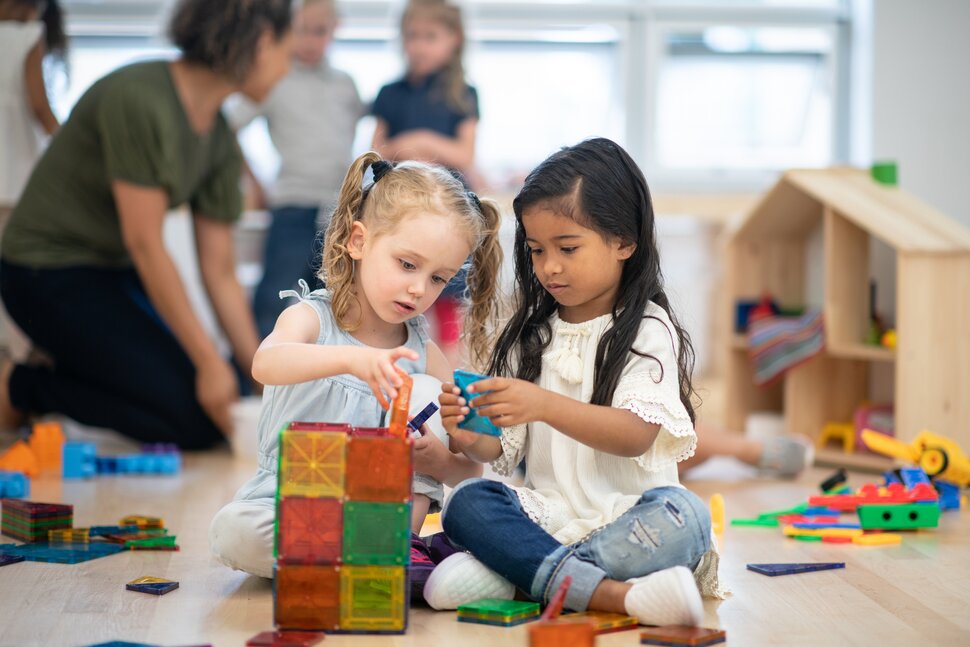The preschool years are an important developmental stage for children. This is the period when they begin to develop social, cognitive, emotional, and motor skills that will shape their future growth. Both parents and teachers play a crucial role in fostering these skills, as they work together to provide consistent guidance and nurturing in different environments. By creating a collaborative approach between the home and preschool, children receive the balanced support they need to thrive.
In this blog, we will explore how parents and teachers can work together to handle kids in preschool and at home, providing practical strategies for managing behaviors, fostering positive growth, and creating a supportive learning environment.
The Importance of a Collaborative Approach
A child’s development is heavily influenced by the interactions they have at home and in school. When parents and teachers work together, they can create a consistent environment that helps children feel secure, understood, and supported. This collaboration ensures that the expectations and routines at home and preschool complement each other, giving children the confidence to navigate their world effectively.
Key reasons for collaboration include:
- Consistency: Children benefit from consistent messages, rules, and guidance at home and in preschool. When parents and teachers communicate regularly, they can ensure children are receiving the same expectations in both environments.
- Holistic Development: Both parents and teachers have unique insights into a child’s strengths, challenges, and needs. Sharing this information helps to create a well-rounded support system that addresses all aspects of a child’s development.
- Emotional Security: Knowing that parents and teachers are on the same page creates a sense of stability for children. They feel more confident when they understand the expectations and know they are being supported by trusted adults.
Strategies for Teachers to Handle Kids in Preschool
Teachers are responsible for providing children with a structured and supportive learning environment. In preschool, children are exposed to new routines, social interactions, and learning experiences. Here are some effective strategies teachers can use to handle kids in preschool:
1. Establish Clear Routines and Expectations
Young children thrive in structured environments where routines are predictable. Teachers can establish clear daily schedules that include time for learning, play, rest, and social interaction. By setting consistent expectations, children know what to expect, which reduces anxiety and helps them transition smoothly between activities.
2. Encourage Positive Social Interactions
Preschool is a key time for developing social skills. Teachers should encourage positive interactions by modeling good behavior, teaching children how to share, take turns, and express their emotions constructively. Group activities that promote teamwork and cooperation help children learn how to build relationships with their peers.
3. Promote Independence and Responsibility
Preschool is an ideal time to help children develop a sense of independence. Teachers can give children simple responsibilities, such as helping clean up after playtime or managing personal belongings. Encouraging children to make choices within structured boundaries builds their confidence and decision-making skills.
4. Use Positive Reinforcement
Positive reinforcement is a powerful tool in preschool education. Praising good behavior, offering rewards, and providing positive feedback can motivate children to repeat positive actions. Whether it’s verbal praise, a sticker, or a high-five, acknowledging children’s efforts helps reinforce desired behaviors.
5. Address Challenging Behaviors Calmly
It’s natural for young children to test boundaries as they learn about the world around them. When challenging behaviors arise, teachers should respond with patience and consistency. Redirecting negative behaviors, offering alternatives, and calmly explaining consequences help children understand appropriate actions. Keeping a calm demeanor ensures children feel safe and supported while learning from their mistakes.
Strategies for Parents to Handle Kids at Home
Parents play a critical role in reinforcing the lessons learned at preschool and creating a nurturing environment at home. Here are some strategies for effectively handling kids at home:
1. Create a Consistent Routine
Children feel secure when they know what to expect each day. Establishing a routine at home that mirrors the structure of preschool helps children transition smoothly between school and home. This could include set times for meals, naps, play, and bedtime. Consistent routines also encourage responsibility and self-discipline in children.
2. Engage in Play-Based Learning
Learning doesn’t stop when children leave preschool. Parents can continue fostering learning at home by engaging in play-based activities that encourage creativity, problem-solving, and exploration. Simple activities like puzzles, building blocks, drawing, and outdoor play help develop cognitive and motor skills while strengthening the parent-child bond.
3. Encourage Open Communication
Creating an environment where children feel comfortable expressing their thoughts and emotions is essential. Parents should encourage open communication by actively listening to their child, asking questions about their day, and showing interest in their feelings. This helps children develop emotional intelligence and learn how to articulate their needs.
4. Set Clear Boundaries with Love
Children need boundaries to feel safe and understand the difference between right and wrong. Setting clear, age-appropriate rules at home teaches children about responsibility and consequences. However, it’s equally important to enforce boundaries with love and understanding, offering explanations rather than punishment.
5. Model Positive Behavior
Children learn by watching the adults around them. Parents can model positive behaviors by demonstrating kindness, patience, and respect in their interactions with others. When children see their parents handling conflicts calmly or showing empathy, they are more likely to imitate these behaviors.
Effective Communication Between Parents and Teachers
Strong communication between parents and teachers is key to supporting a child’s development. Here are some ways parents and teachers can work together:
1. Regular Check-Ins
Frequent communication between parents and teachers allows both parties to stay informed about the child’s progress, challenges, and successes. Regular check-ins, whether through face-to-face meetings, phone calls, or emails, help address any concerns and ensure that both home and school environments are aligned.
2. Share Observations
Parents and teachers should share their observations about the child’s behavior, learning progress, and social interactions. Teachers may notice certain behaviors at school that parents can address at home, and vice versa. This mutual exchange of information helps create a comprehensive understanding of the child’s needs.
3. Collaborate on Goals
Setting developmental goals for the child can be a joint effort between parents and teachers. Whether it’s improving social skills, enhancing fine motor abilities, or fostering emotional regulation, working together to set and achieve these goals ensures consistency in the child’s development.
4. Address Concerns Together
When challenges arise, parents and teachers should approach the situation as a team. Collaborating on solutions, sharing strategies, and offering support to one another helps address behavioral or developmental concerns more effectively. Open and honest communication is key to finding solutions that work in both the home and preschool environments.
Conclusion: Nurturing Children’s Growth Together
Handling preschool-aged children requires patience, consistency, and a collaborative approach between parents and teachers. By creating structured environments, setting clear expectations, and encouraging positive behaviors, both parents and teachers can help children develop essential skills during these formative years. When the home and preschool environments work in harmony, children feel supported, secure, and empowered to explore and grow.
Ultimately, the combined efforts of parents and teachers pave the way for a child’s success—both academically and emotionally—providing them with a strong foundation for future learning and development.









